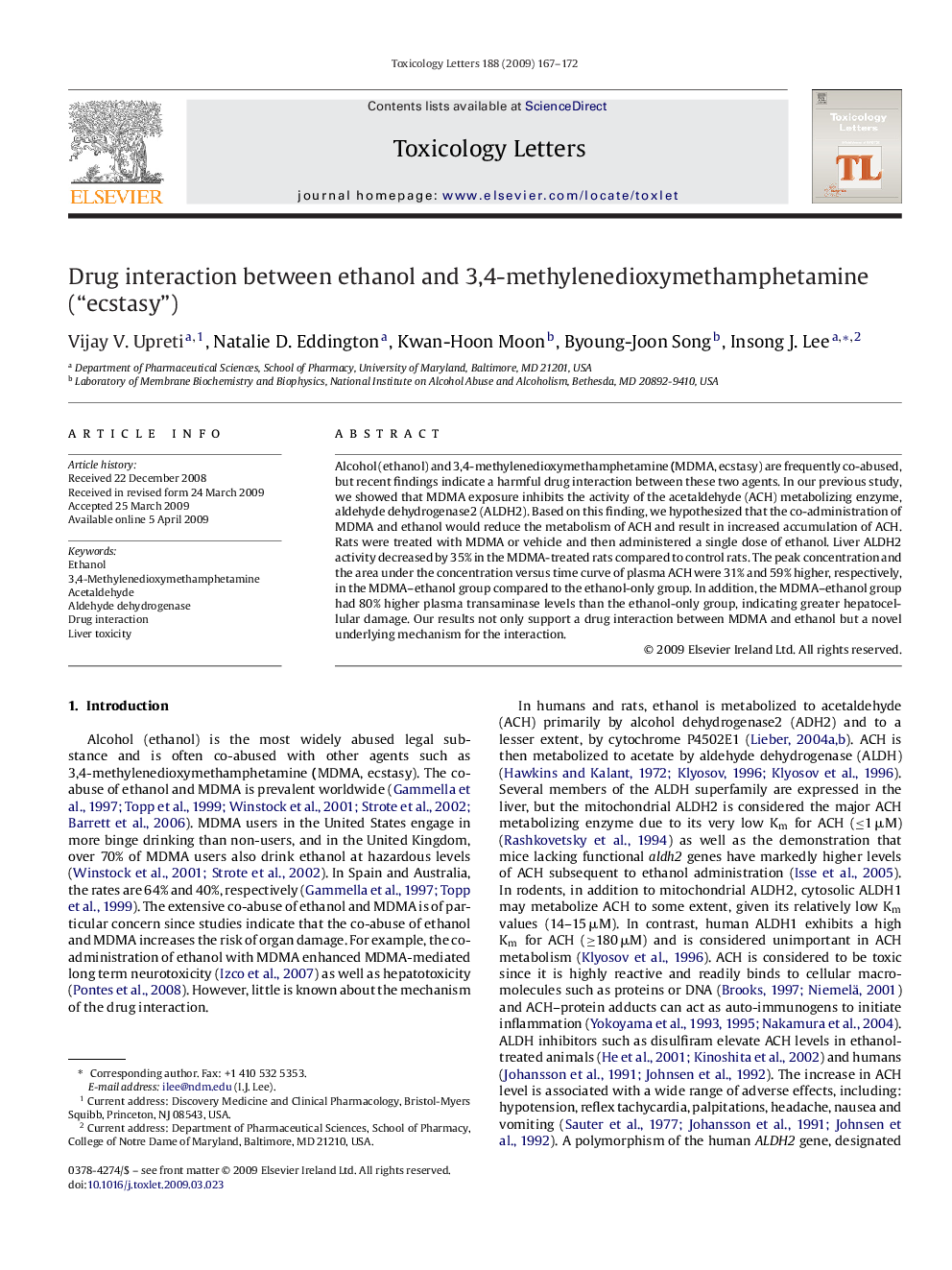| Article ID | Journal | Published Year | Pages | File Type |
|---|---|---|---|---|
| 2601003 | Toxicology Letters | 2009 | 6 Pages |
Alcohol (ethanol) and 3,4-methylenedioxymethamphetamine (MDMA, ecstasy) are frequently co-abused, but recent findings indicate a harmful drug interaction between these two agents. In our previous study, we showed that MDMA exposure inhibits the activity of the acetaldehyde (ACH) metabolizing enzyme, aldehyde dehydrogenase2 (ALDH2). Based on this finding, we hypothesized that the co-administration of MDMA and ethanol would reduce the metabolism of ACH and result in increased accumulation of ACH. Rats were treated with MDMA or vehicle and then administered a single dose of ethanol. Liver ALDH2 activity decreased by 35% in the MDMA-treated rats compared to control rats. The peak concentration and the area under the concentration versus time curve of plasma ACH were 31% and 59% higher, respectively, in the MDMA–ethanol group compared to the ethanol-only group. In addition, the MDMA–ethanol group had 80% higher plasma transaminase levels than the ethanol-only group, indicating greater hepatocellular damage. Our results not only support a drug interaction between MDMA and ethanol but a novel underlying mechanism for the interaction.
